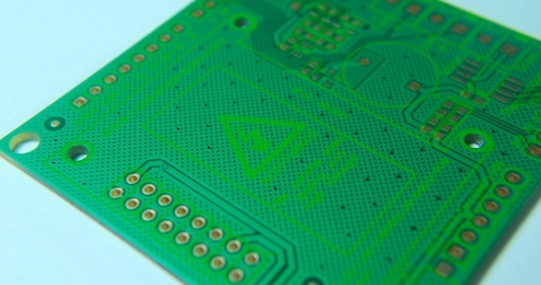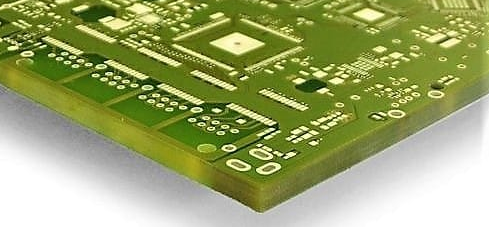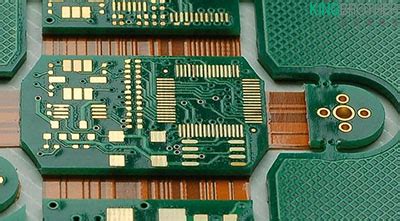PCB Routing Automation Technology: Current Trends and Future Directions
Abstract
Printed Circuit Board (PCB) routing automation has undergone significant transformations in recent years, driven by advancements in artificial intelligence, machine learning, and computational algorithms. This paper explores the current state of PCB routing automation technologies, examining traditional rule-based approaches alongside modern AI-driven solutions. We analyze the technical challenges in automated routing, including signal integrity preservation, thermal management, and electromagnetic compatibility. The discussion extends to comparative evaluations of commercial routing tools and emerging open-source alternatives. Furthermore, we investigate the integration of automated routing within the broader electronic design automation (EDA) workflow and propose future research directions that could revolutionize PCB design methodologies. This comprehensive review aims to provide engineers and researchers with insights into selecting and implementing appropriate routing automation solutions for various design requirements.
Keywords: PCB design, routing automation, electronic design automation, AI in EDA, design rule checking

1. Introduction to PCB Routing Automation
The evolution of PCB routing automation mirrors the increasing complexity of electronic systems. Modern PCBs often contain thousands of components with intricate interconnection requirements across multiple layers, making manual routing impractical for all but the simplest designs. Automated routing technologies have progressed from basic maze routers in the 1980s to sophisticated constraint-driven systems that incorporate hundreds of design rules while optimizing for performance, manufacturability, and cost.
Contemporary PCB routing automation addresses several critical challenges:
- Geometric complexity: Managing high-density interconnects with micron-scale precision
- Electrical constraints: Maintaining signal integrity for high-speed digital and analog circuits
- Thermal considerations: Ensuring proper heat dissipation through strategic routing
- Manufacturing requirements: Adhering to fabrication and assembly tolerances
- Time-to-market pressure: Reducing design iteration cycles through intelligent automation
The economic impact of routing automation is substantial. Industry studies indicate that advanced routing tools can reduce PCB design time by 40-60% while improving first-pass success rates by 30% compared to manual methods. These efficiency gains become increasingly valuable as product lifecycles shorten and technological complexity grows.
2. Fundamental Routing Algorithms and Methodologies
2.1 Grid-based and Gridless Approaches
Traditional routing algorithms operated on predefined grids, simplifying pathfinding but limiting resolution. Modern gridless routers use geometric computation techniques to navigate between pins with arbitrary shapes and positions, offering superior density utilization. Computational geometry methods like Voronoi diagrams and medial axis transforms enable efficient obstacle avoidance in complex board layouts.
2.2 Topological Routing vs. Geometric Routing
Topological routers first establish connection relationships without precise geometric placement, then refine the paths to meet physical constraints. This two-phase approach often yields better global optimization than purely geometric methods that may become trapped in local minima. Advanced implementations combine both strategies, using topological analysis to guide geometric refinement.
2.3 Multi-objective Optimization Techniques
Contemporary routers must simultaneously optimize for:
- Electrical performance (impedance control, crosstalk minimization)
- Thermal characteristics (current carrying capacity, heat distribution)
- Manufacturability (adherence to fabrication design rules)
- Aesthetics (maintenance of consistent routing styles)
Pareto optimization frameworks and cost-function-based approaches enable routers to balance these competing requirements effectively. Machine learning techniques are increasingly employed to learn optimal weighting schemes from historical design data.

3. Advanced Automation Technologies
3.1 Constraint-Driven Routing
Modern EDA tools implement comprehensive constraint management systems that capture:
- Electrical constraints: Impedance targets, length matching tolerances
- Physical constraints: Clearance rules, via restrictions
- Manufacturing constraints: Minimum annular ring, solder mask requirements
- Assembly constraints: Component placement keepouts
These constraints guide the router through every stage from global path planning to final cleanup. Advanced systems allow constraints to be dynamically adjusted based on routing context, enabling more intelligent automation.
3.2 AI and Machine Learning Applications
Recent breakthroughs have introduced several AI-powered routing techniques:
Deep Reinforcement Learning (DRL) for Routing
DRL agents learn routing strategies through simulated design environments, developing sophisticated heuristics that outperform traditional algorithmic approaches. Notable implementations have demonstrated the ability to:
- Predict optimal escape routing patterns for BGA packages
- Automatically adjust trace widths based on current requirements
- Develop innovative routing topologies that minimize signal reflections
Graph Neural Networks for Net Classification
GNNs analyze the connectivity graph of PCB networks to:
- Predict optimal routing order to minimize conflicts
- Identify critical nets requiring special handling
- Cluster related signals for efficient bus routing
Generative Adversarial Networks for Routing Pattern Synthesis
GANs learn from high-quality historical designs to generate routing patterns that:
- Mimic expert routing styles
- Adapt to new component layouts
- Suggest alternative routing solutions
3.3 Cloud-based Distributed Routing
Cloud computing enables several transformative capabilities:
- Parallel routing: Different board sections routed simultaneously
- Design space exploration: Multiple routing variants generated and evaluated
- Collaborative routing: Teams working concurrently on complex designs
- Infinite undo: Complete versioning of routing decisions
Leading EDA vendors now offer cloud-native routing solutions that leverage elastic compute resources to handle exceptionally large designs that would overwhelm local workstations.
4. Specialized Routing Challenges and Solutions
4.1 High-Speed Digital Routing
Modern high-speed designs (DDR5, PCIe Gen6) require:
- Impedance-controlled routing: Precise trace geometry management
- Length matching: Skew control to within picosecond tolerances
- Differential pair routing: Maintaining consistent spacing and phase alignment
- Via optimization: Minimizing stub effects and impedance discontinuities
Automated routers employ electromagnetic field solvers to validate routing decisions in real-time, adjusting trace parameters to meet stringent signal integrity requirements.
4.2 RF and Microwave Routing
RF circuits present unique challenges:
- Transmission line effects: Accounting for wave propagation at GHz frequencies
- Material properties: Managing dielectric losses and dispersion
- Radiation control: Preventing unintended antenna effects
- Shielding requirements: Implementing effective grounding strategies
Specialized RF routers incorporate full-wave simulation capabilities to ensure proper electromagnetic performance while maintaining manufacturability.
4.3 Power Distribution Network (PDN) Automation
Modern PDN design requires:
- DC analysis: Ensuring adequate current capacity
- AC analysis: Maintaining low impedance across frequency bands
- Thermal analysis: Preventing excessive temperature rise
- Decoupling optimization: Strategic capacitor placement
Advanced tools automatically synthesize power plane shapes, optimize via distributions, and validate performance through integrated simulation.
5. Integration with Overall Design Flow
Effective routing automation must integrate seamlessly with other EDA processes:
5.1 Schematic-to-Layout Interface
Intelligent netlist import features:
- Constraint inheritance: Electrical rules from schematic propagate to layout
- Net classification: Automatic identification of critical signals
- Component grouping: Logical hierarchies preserved for efficient placement
5.2 Placement-Routing Co-optimization
Next-generation tools break down the traditional placement-routing sequence:
- Legalization-aware routing: Accommodating minor placement adjustments
- Routing-driven placement: Components moved to improve routability
- Pin-swapping optimization: Reassigning pins to simplify connections
5.3 Design Verification Integration
Automated routing must support:
- Real-time DRC: Immediate feedback on rule violations
- ERC integration: Electrical rule verification during routing
- Signoff preparation: Generating outputs for final verification
6. Commercial Tools and Open Source Alternatives
6.1 Leading Commercial Solutions
- Cadence Allegro: Industry-standard tool with advanced constraint management
- Mentor Xpedition: Known for high-density interconnect capabilities
- Altium Designer: Popular mid-range tool with strong automation features
- Zuken CR-8000: Specialized for complex automotive and aerospace designs
6.2 Emerging Open Source Options
- KiCad: Improving automation capabilities with recent developments
- Horizon EDA: Incorporating modern routing algorithms
- OpenROAD: Academic-grade tools transitioning to production use
7. Future Directions and Research Challenges
Several promising research avenues could transform PCB routing:
7.1 Quantum Computing for Routing Optimization
Quantum algorithms may solve complex routing problems that are intractable for classical computers, particularly for:
- Global routing optimization
- Multi-board system routing
- 3D-IC interconnect synthesis
7.2 Bio-inspired Routing Techniques
Emerging approaches draw inspiration from:
- Neural pathways: Mimicking biological signal propagation
- Slime mold algorithms: Adaptive pathfinding strategies
- Evolutionary computation: Genetic algorithms for topology optimization
7.3 Autonomous Self-correcting Designs
Future systems may feature:
- In-situ routing adjustment: On-board reconfigurable interconnects
- Machine learning-based adaptation: Circuits that optimize their own layout
- Yield-aware routing: Automatic compensation for manufacturing variations
8. Conclusion
PCB routing automation has progressed from simple connection-completion tools to sophisticated systems that embody deep engineering knowledge and advanced computational intelligence. As electronic systems grow more complex and development cycles shorten, the role of automated routing will only increase in importance. The integration of AI techniques with traditional algorithms promises to unlock new levels of design productivity and performance. However, significant challenges remain in developing systems that can match or exceed human expertise while maintaining the flexibility to accommodate novel design requirements. The next decade will likely see transformative changes in how PCBs are designed, with routing automation at the forefront of this evolution.







